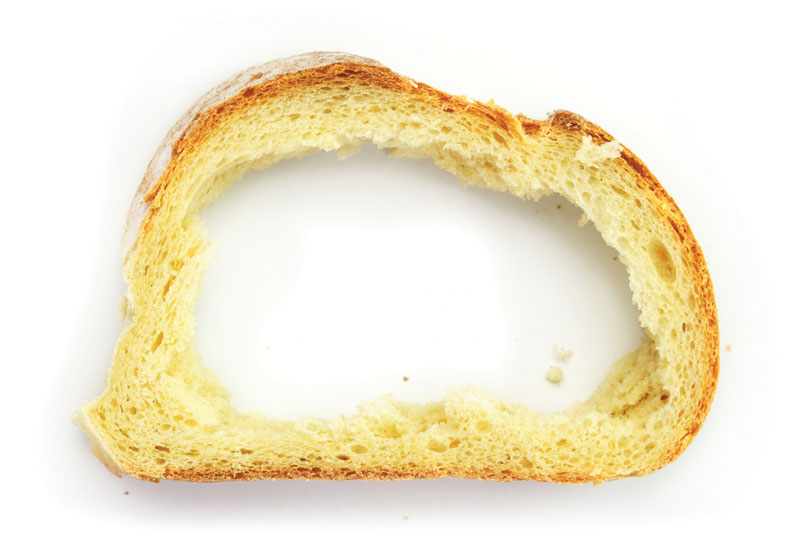I’ve just had a difficult discussion with a patient about a diagnosis of Celiac disease. For those unfamiliar with Celiac, it’s an autoimmune disorder damaging the small intestines, prompted by an inability to digest gluten, a protein found in many grains. I have just informed her that the treatment is a gluten free diet.
We arrived at this place after testing, an important step to confirm the diagnosis prior to undertaking the structure of a gluten free food program. Her response was familiar, “Oh, no, if I can’t eat gluten, what can I eat?” As a naturopathic physician and a lover of food, I’m no stranger to this response. Upon hearing the gluten free pronouncement, and that this will be a lifetime commitment, people go through a gamut of emotions.
The initial emotion is often one of grief; a sense of a loss of power and indeed a loss of the actual foods that were once so enjoyed. No bread? No pasta? What on earth will I eat?!” I tell them that their attitude is important and they will be able to eat many foods including fruits, vegetables, meat, eggs, real cheese and rice, but no grains or flours that contain gluten. I also remind them how easy it is to flavor food with herbs for tasty meals, to dispel visions of bland, boring, and unappealing choices.
The next wave is fear that comes from external reactions. “What will my family and friends think? How and where will we enjoy meals together? Will I now be considered “high maintenance?” Once the initial panic subsides, however, I am able to gently and supportively walk patients through the next stage of their journey and the many healthy options that are available to them. I introduce whole foods and tasty menus, and reassure them that many of their favorites are still available to them, just in different ways.
Initially, I recommend a diet rich in vegetables, fruit, and proteins, something I would tell anyone who is interested in improving their health. I usually see relief when the realization occurs that stir frying and steaming are easily accomplished and can produce very delicious results. Whole grains are also allowed, but generally they’re different from what the patient is used to. Rice and quinoa are good first choices that can be adapted to more familiar foods like cereal, pasta and pizza crust. Gluten free flours, baking mixes, rice and corn pastas, cereals, and crackers are now available in a lot of the supermarkets and of course in health food stores and Whole Foods stores.
By this time, the initial fear has subsided, but we’re not out of the woods yet. The food choices have been addressed, but what about all of those other non food concerns? I approach them individually.
As regards to what people think about their new eating habits, I mention that if someone presses them to eat something that will cause distress, an explanation of the reason for refusal generally takes care of things. If not, I remind them that nothing is more important than that they feel good.
Also, high maintenance is not an issue because the acceptable choices are readily available in almost any eating establishment. If you communicate with friends, family and restaurant servers in a friendly and cheerful manner, you can easily survive (and even enjoy!) a trip out. Have you ever heard of a restaurant that doesn’t serve fruit, vegetables or meat?
The internet is a very useful tool for identifying and locating restaurants that accommodate gluten free diets. Many restaurants now are aware of gluten issues and have gluten free items. Burton’s Grill at The Evergreen Walk location in South Windsor, like all the Burton’s restaurants, is an example. To receive a gluten free menu, just ask for it. In Rocky Hill, consider trying Elizabeth’s, all menu items can be prepared gluten free. In Cromwell, consider La Piastra for pre-packaged gluten free meals when you don’t have time to cook. Furthermore, the number of gluten free restaurants and even grocery aisles and bakeries is constantly expanding as awareness grows around Celiac. One good choice is Dee’s One Smart Cookie, a bakery in Glastonbury. In Old Wethersfield consider the Country Store for the Pure Love gluten free bread and muffins. In Vernon consider, Nature’s Grocer gluten free cafe items. Check the internet for a gluten free restaurant in your area.
There are a number of very helpful resources available to assist in navigating the gluten free lifestyle. To begin, I advise checking out the following:
The Gluten Free Revolution by Jax Peters Lowell, Gluten Free Girl by Shauna James Ahera (www.girlfreegirl.com), Gluten Free Gourmet by Betty Hagman, and websites: https://www.glutenfreeliving.com, www.PureLove.com.
Finally, I remind them that their attitude, as in all other aspects of life is critical to their health. As they continue to learn more about the disease and themselves, and manage both their health and their lives, they realize that the shift from fear to self reliance has been a journey and that through the adventure they have come to appreciate not only their new eating habits, but also their new found self reliance along the way.
A gluten free life is not as difficult as it sounds. Once people get familiar with it, I often hear in follow up visits that they have indeed successfully found “food that they love and that loves them back.”
Dr. Marie Mammone, N.D. is a Connecticut Licensed and nationally Board certified Naturopathic Physician. Dr. Mammone has a practice in Wethersfield, CT and can be reached at (860) 529-1200 or http://www.NAHcenter.com.
